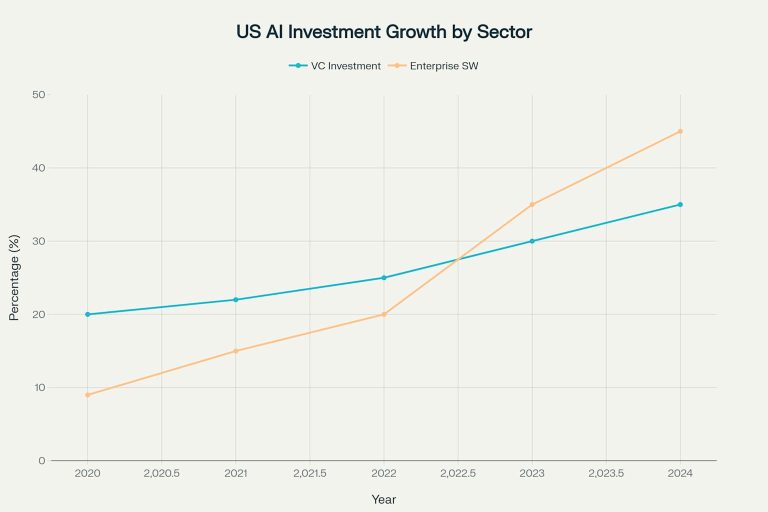S&P 500 Q1 Earnings Preview: Tariffs and Future Guidance
The S&P 500 first-quarter 2025 earnings season is upon us, set to unfold against a backdrop of heightened market volatility and significant uncertainty. As companies report their results from this week through late May, investors won’t just be looking at the Q1 numbers; they’ll be intensely focused on what management signals about the road ahead. The dominant theme heading into this crucial period? Caution.

Setting the Stage: Lowered Expectations and Lingering Questions
Analysis conducted before the official start of the reporting frenzy reveals a distinctly cautious stance from corporate America and Wall Street analysts:
- Guidance Trended Negative: In the lead-up to the season (data as of late March), an unusually high number of S&P 500 companies (68 out of 107 issuing guidance) warned of potentially weaker-than-expected Q1 earnings per share (EPS). This 64% negative guidance rate surpassed both 5-year and 10-year averages, signaling significant near-term concerns.
- Analysts Trimmed Forecasts: Responding to corporate caution and macroeconomic headwinds, analysts significantly slashed their Q1 earnings growth forecasts between the end of 2024 and early April. Initial projections near 11.6% year-over-year growth were cut down to the 7-8% range. While still positive (potentially marking the seventh straight quarter of growth if realized), this sharp downward revision was larger than usual, setting a lower bar for companies to clear.
- The Tariff Elephant: A major driver of this caution is the uncertainty surrounding potential tariffs. Crucially, many companies explicitly stated their initial Q1 guidance did not factor in the potential impact of these proposed trade policies, creating a significant unknown as the season begins.
This pre-season setup means that while the lowered consensus estimates might be easier to “beat,” the market’s focus will likely shift intensely towards the quality of earnings (revenue, margins) and, critically, any updated guidance provided for Q2 and the full year 2025.
Early Signals: What the First Reporters Said (Week of April 7th)
The earnings season unofficially kicked off last week with reports from early reporters like Delta Air Lines (DAL) and major financial institutions including JPMorgan Chase (JPM), Wells Fargo (WFC), and BlackRock (BLK). By Friday, April 11th, roughly 29 S&P 500 companies had reported. So, did they offer guidance, and what was the tone?
- Guidance Provided, But Very Cautious Tone: Generally, these initial reporters did provide some form of forward-looking guidance, but the tone often reflected the broader uncertainty, and there were signs of increased caution.
- Delta Air Lines (DAL): Provided Q2 guidance but notably withdrew its full-year 2025 guidance, citing the lack of economic clarity as making it “premature” to provide an updated outlook. This move directly reflects the heightened uncertainty discussed pre-season.
- Major Banks (JPM, WFC): Offered outlooks for key metrics like Net Interest Income (NII), often maintaining previous forecasts but expressing caution. Both JPM’s CEO Jamie Dimon and WFC’s CEO Charlie Scharf explicitly mentioned economic uncertainty, potential turbulence, and risks associated with tariffs in their commentary, even while reporting solid Q1 results.
- BlackRock (BLK): Reported strong asset gathering but commentary around the results highlighted navigating market complexity and client uncertainty.
- Tariff Impact Still an Overhang: While banks acknowledged tariff risks, the full impact remains largely unquantified in guidance, keeping it a key focus area for upcoming reports.
In essence, the first wave of reporters confirmed the cautious sentiment. While guidance wasn’t universally withheld for the immediate next quarter, the commentary was guarded, and Delta’s decision to pull full-year guidance is a significant indicator that companies may struggle with longer-term visibility. This initial batch provides only a limited snapshot, and the real test will come as hundreds more companies report over the next few weeks.
The Looming Question: Will Others Follow Suit or Halt Guidance?
The cautious guidance and Delta’s withdrawal of its full-year outlook keep the focus squarely on the bigger question: will companies reporting in the peak weeks (late April – mid-May) continue to provide forecasts, especially for the full year, or will the uncertainty lead many to withhold guidance?
What would a “guidance vacuum” mean as the season unfolds?
- Potential for Increased Volatility & Anxiety: Guidance acts as a roadmap. Without it, uncertainty spikes. This could lead to wider price swings around earnings releases or reactions to macroeconomic news.
- Challenges for Analysts: A lack of official targets makes it harder for analysts to build financial models. Expect potentially wider dispersion among analyst estimates and less confidence in consensus figures if guidance is scarce.
- Shift in Focus: Investors will likely place even greater weight on qualitative management commentary (tone during earnings calls, strategic priorities) and scrutinize balance sheets and cash flow even more closely. Macroeconomic data releases will also gain importance.
- Possible Liquidity Impact: Increased uncertainty around future earnings can sometimes lead to wider bid-ask spreads for affected stocks.
The Forward P/E Conundrum
A lack of forward guidance directly impacts one of the most commonly used valuation metrics: the forward Price-to-Earnings (P/E) ratio, which relies on expected future earnings.
- The ‘E’ Becomes Fuzzier: If companies don’t guide, the “E” (Earnings) in the forward P/E becomes highly speculative. Analysts may use wider estimate ranges or even refrain from providing forward estimates.
- Risk Premium May Rise: Decreased earnings visibility typically leads investors to demand a higher risk premium. This can cause P/E multiple compression (lower P/E ratios), as investors become less willing to pay a premium for uncertain future earnings. Stocks lacking guidance might face valuation pressure.
- Shift to Other Metrics: Investors might lean more heavily on trailing P/E ratios, price-to-book, price-to-sales, or dividend yields, though these metrics also have limitations.
Investor Takeaways: What to Watch For
The Q1 2025 earnings season is shaping up to be a crucial “reality check.” It will provide the first concrete corporate data and commentary following the emergence of significant policy uncertainties.
As the season progresses from this week through its peak period (expected late April to mid-May) and into late May, investors should:
- Focus on Quality: Prioritize companies with strong fundamentals and proven management.
- Scrutinize Commentary: Listen closely to the tone and details from management, especially regarding tariffs and future outlooks. Is guidance being provided, updated, or withdrawn? Pay attention to whether companies follow Delta’s lead on full-year guidance.
- Monitor Sector Trends: Watch if earnings contributions broaden beyond the tech giants and how different sectors are navigating cost pressures and demand shifts. Pay attention to the guidance trends emerging from the bulk of reporters in the coming weeks.
- Maintain Perspective: Expect potential volatility and focus on long-term strategy.
The key question isn’t just whether companies meet the lowered Q1 bar, but whether they project confidence—or continued caution—in navigating the uncertain path ahead. The presence, or absence, of clear forward guidance will be a major story to follow.
Please note: This blog post was drafted with the assistance of AI and has been reviewed and edited by the author.
Disclaimer: The information provided in this blog post is for informational purposes only and does not constitute financial, investment, legal, or tax advice. It is essential to conduct your own research and consult with a qualified professional before making any financial decisions based on the content provided herein.



